How To View Images From A X10 Camera Using Va12a Without X10 Software
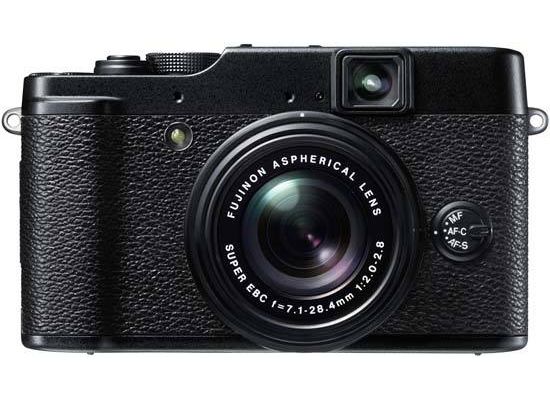
Introduction
The Fujifilm Finepix X10 is an advanced compact photographic camera that offers a retro design, 12 megapixel two/3-inch EXR CMOS sensor, a 4x, 28-112mm, f/2.0-two.8 zoom lens with a manual zoom ring, optical viewfinder, 1080p movie recording, 7fps burst shooting and a 2.8-inch LCD monitor with a resolution of 460,000 dots. Other key features of the Fujifilm X10 include an ISO range of 100-12800, full range of manual controls, Fujifilm's EXR shooting modes, optical paradigm stabilisation, raw image capture, a hot-shoe, an integrated transmission popular-upwards flash, film simulation modes, 360° move panoramas, 1cm macro fashion and an electronic level judge. The Fujifilm Finepix X10 is available in black priced at $599.95 / £529.95.
Ease of Use
The Fujifilm Finepix X10 takes many of its design cues from its incredibly popular large brother, the X100, sharing very similar retro styling and control layout. The X10 is a classically styled camera that recalls film rangefinders from the past, with a beautiful retro design that tin't fail to print everyone that sees it, and definitely anybody that holds it. In an historic period where digital cameras are virtually ubiquitous, the Fujifilm X10 stands out by a mile thanks to it unique styling and bullet-proof build quality, non to mention a wealth of photographer-friendly features.
Where the X100 is very much a niche product cheers largely to its not-interchangeable 35mm fixed focal length lens and strong emphasis on a manual mode of shooting, the new X10 is aiming at a wider market place, instead sporting a 4x, 28-112mm zoom lens that will instantly appeal to more people. The Fujifilm Finepix X10's lens has a fast aperture of f/two.0 at the 28mm wide-bending setting and f/2.8 at total telephoto, which in combination with the extensive ISO range of 100-3200 at full 12 megapixel resolution makes the X10 well suited to depression-calorie-free shooting, allowing you lot to manus-agree the camera in places where you'd commonly be reaching for a tripod (if immune) or other support, especially as the photographic camera also features congenital-in optical image stabilisation.
The Fujifilm Finepix X10 is an amazingly well-built photographic camera, with absolutely no flex or motility in its chassis thanks to the die-cast magnesium alloy top and base plates and machined control dials. At the same time, it's actually a little lighter than a get-go glance might suggest, weighing in at 350g with the bombardment and retentivity card fitted. Measuring 117.0(W) ten 69.6(H) x 56.eight(D) mm, it'south non that much smaller than the X100 though, and is also larger than its principal rivals, making it best suited to life in a small photographic camera pocketbook or large coat pocket. There are some plastic buttons and controls on the X10, most notably the memory carte du jour / battery compartment door and the rear circular control wheel and buttons, only other that that the X10 offers incredible build quality because its cost-tag.
The X10 is supplied with a push-on, lined metal lens cap to help protect its 4x optic, although in that location'southward no way to connect it to the camera. Yous can use filters with the X10, merely only by ownership the optional LH-X10 Lens Hood and Adapter Ring prepare accessory, which allows you to fit 52mm filters. In that location's a subtle but constructive hand-grip at the front of the X10 and a safe thumb-residue on the rear, with your grip helped in no minor part by the textured faux-leather surface that runs around the full width of the camera. Two small metallic eyelets on either side of the body are used for connecting the supplied shoulder strap, which isn't quite equally luxurious as the residue of the package. A metal tripod mount is positioned off-heart from the lens away from the memory card / battery compartment, and then you don't take to remove the photographic camera from the tripod to change either of them.
At the heart of the X10 is a 12 megapixel 2/three-inch EXR CMOS sensor, a size that was used by several span-fashion compacts in the past but which has recently fallen out of favour. This sensor is larger than those in nearly meaty cameras and promises to deliver better image quality, although not the equal of a compact organization camera or a DSLR. Fujifilm'south EXR sensor tin can be utilized in ane of three ways by the photographer. In that location's a choice betwixt shooting at full 12 megapixel resolution in Loftier Resolution (HR) mode, or a 6 megapixel image in the Low Noise (SN) mode for shooting without flash in low low-cal weather, or the Dynamic Range (DR) mode to achieve an optimal balance between shadows and highlights. The latter offers five strengths ranging from 100-1600%. If yous can't decide which is best for a chosen scene or discipline, and so just go out the photographic camera on the scene-detecting EXR Automatic Mode and let it choose for itself.
We ran into some issues in vivid sunlight when shooting in aperture and shutter priority modes, where the top shutter-speed limit of 1/1000th second at f/2 or f/ii.8 often caused under-exposure. Dissimilar the X100, the new X10 doesn't feature a congenital-in Neutral Density filter, so yous'll take to stop-downwardly the discontinuity and cede some depth-of-field to avert blowing out the highlights. Alternatively you can switch to the Manual shooting mode, which rather bizarrely allows a faster shutter-speed of 1/4000th 2nd. The X10 offers a fantastic close focusing distance of 1cm, then macro shooting is definitely on the cards.
The Fujifilm Finepix X10'south machine-focusing speed is thankfully much quicker than the X100's, which isn't exactly the quickest in the world at around ane/4 second in good light. DSLR owners accepted to the quick reactions of their phase-detection cameras will likely find the very slight delay of the X10's 49-betoken arrangement every bit it locks onto the subject area slightly annoying, but for everyone else the camera is more than fast enough for everyday shooting, particularly as information technology'due south accurate nigh 100% of the time in both proficient and bad light. At that place is ane small fly in the ointment though. Normal focusing is from 50cms to infinity at 28mm wide-angle, then if y'all desire to get closer to your subject than that and even so be able to auto-focus, yous have to think to select the Macro mode, which gets you as close every bit 10cms from your subject (with Super Macro Mode offering a focusing distance of just 1cm).
Transmission focusing is activated past setting the focusing switch on the front of the photographic camera to Transmission and using the rear thumb-cycle to set the distance, with the LCD display automatically zooming in on the subject to help you judge the sharpness. There's a handy blue distance calibration forth the bottom of the LCD screen with a ruddy bar indicating the the focusing distance and a white bar showing the depth of field, which actually changes in line with the current aperture - very handy. Information technology takes a lot of turns to motility up and down the distance calibration, not helped by the rather united nations-responsive pollex-wheel, which makes manual focusing with the X0 much more of a chore than a pleasure.
The Fujifilm Finepix X10 offers not one, non 2, but three means of composing your images. In addition to the high-resolution 2.8 inch LCD monitor on the back, which has 460k dots and offers 100% scene coverage, the X10 also features an optical viewfinder. Optical viewfinders are something of a dying breed amongst modernistic cameras, so it'due south very refreshing to see X10 feature one, offering 85% scene coverage, diopter control, a brilliant display and zooming in and out as the focal length is changed. Note that the viewfinder is fixed in the 4:3 ratio, making information technology trickier to use with 3:ii or 16:9, and it also lacks whatsoever information markings, different the X100's very clever hybrid viewfinder. Withal, we'd rather have an eye-level viewfinder than non, and nosotros used it about 50% of the time when shooting with the X10.
In terms of operational speed, the Fujifilm Finepix X10 has some real standout highlights, but also a few weak points. Shutter lag is well-nigh non-existent on this camera, so once you have set up the focus, you'll never miss the moment considering the photographic camera can't fire the shutter quickly enough. Continuous shooting speeds are also good, with a top rate of 10fps, although that'south but when shooting JPEGs at the 6 megapixel M setting, with 7fps available for full-resolution 12 megapixel JPEG images. Annotation that if you're shooting RAW, the fastest possible rate is 7fps at vi megapixels, rather limiting its usefulness. Shooting a single RAW + Fine JPEG takes about six seconds to tape to the card, although thankfully you can take some other shot almost straight away. Taking a vii frame 12 megapixel JPEG outburst only took the camera a few seconds to save, during which time you tin can't take whatever more pictures.
1 area in which the Fujifilm Finepix X10 excels is its handling, cheers in no small-scale role to the numerous external controls that make changing the central settings a cakewalk, especially when holding the camera at eye-level. Surrounding the lens is a transmission zooming ring, with 6 markings including Off, 28, 35, fifty, 85 and 112mm. This ring performs two functions - it powers the camera on by turning it from Off to the 28mm setting, denoted past a definite click, and turns the camera off again by turning information technology in the reverse direction. Very clever.
It also allows you to quickly zoom the lens and set the focal length past turning it, with a brusque and tactile movement that works particularly well when you hold the camera up to eye-level. It'due south a little more awkward to use when belongings the camera at arms length though, where a more conventional zoom lever would exist preferable, non helped by the lack of any markings on the horizontal zoom scale that appears on the LCD screen. All in all, though, the manual zooming band works very well, practically begging you to hold the camera up to your centre.
On superlative of the X10 are tactile dials for changing the exposure compensation and the shooting mode, the tiny Fn push which past default provides quick access to the ISO speeds, but tin can exist customised to adapt your own needs from one of ten different settings, a small but responsive shutter release push with a thread for a very traditional mechanical cablevision release - there's no need to buy an expensive defended accessory for this camera - an external flash hotshoe for suitable dedicated external units, and finally the camera's built-in popular-up flash, which cleverly only appears when a wink style is selected and which has a range of 50cm - 7m at ISO 800.
The X10'southward LCD screen is large plenty at 2.8 inches and of sufficiently high resolution (460k dots) to match the residual of the camera's high specification. I actually establish myself using it less than with a DSLR, due to the power to use the optical viewfinder, and you could conceivably plough off the LCD altogether to help eke out the 270 shot battery life even further. The LCD screen does have a handy Info view which presents all of the key settings at once, or yous tin switch to the Standard or Custom Alive View modes, with the latter offering a multitude of customisable options. To brand the camera less obtrusive, there'southward a Silent carte du jour selection which turns off the speaker, flash, AF-assist lamp and most chiefly the artificially-created shutter-release sound, instantly making the X10 perfectly suited to candid photography.
The Fujifilm Finepix X10 betters its big brother, the X100, by being able to record 1080p movies at 30fps with stereo sound, turned on past selecting the Movie option on the shooting mode dial. There are as well several irksome motion options - 70fps at 640x480 pixels, 120fps at 320x240, and 200fps at 320x112. You tin can set the aperture and shutter speed before recording begins, but not during, and you tin can as well set the Film Simulation mode, and then blackness and white footage is possible. Center or continuous auto-focusing is possible, but unfortunately you can't manually focus at all, which rules out some creative effects, and face detection tin be enabled. At that place is a HDMI port for connecting the X10 to a loftier-definition TV, although as usual there's no cablevision supplied in the box. Too missing is a paper copy of the otherwise helpful manual, which is supplied on CD-ROM instead, along with the consumer MyFinepix software the slow and rather unintuitive RAW convertor (essentially a particularly customised version of the commercial Silkypix application).
The X10 has a logical rear control layout. In that location's a vertical row of four buttons on the left of the LCD screen for prototype playback, exposure modes, focusing types, and white balance. On the right are the rear control dial and customisable AFL/AEL button, a circular control bike which can be used to change the shutter speed and aperture and select other settings, and 4 options around information technology for setting the bulldoze manner, flash manner, self-timer and focusing mode. In the middle of the control wheel is the Carte button, which accesses the Shooting and Set up-upwards main menus. Underneath are ii buttons, the first for changing the LCD display or going back, and the 2nd for enabling the camera'southward RAW format. Although this lets you quickly switch from JPEG to RAW and back once more, most X10 users will probably shoot in RAW or RAW+JPG anyhow, and so it feels a lilliputian redundant, peculiarly as you can't customise information technology to another setting.
The Fujifilm Finepix X10 takes the meaty camera to the side by side level, with a luxurious and intuitive design, course-leading build quality, quick responses and enough features to satisfy almost photographers. At present permit'due south take a wait at its prototype quality...
Image Quality
All of the sample images in this Review were taken using the 12 megapixel Fine JPEG setting, which gives an boilerplate epitome size of around 5Mb.
The Fujifilm FinePix X10 produces images of very good quality. It recorded noise-free JPEG images at ISO 100 upward to 800, with a petty noise and slight color desaturation at ISO 1600 and more visible racket at the fastest setting of ISO 3200 at total resolution, an excellent performance for a camera with such a small sensor. Even the reduced resolution setting of ISO 6400 is worth using, although the same tin can't be said about the range-topping ISO 12800. The RAW files were also excellent, with usable images throughout the entire range of ISO 100-3200, although they are noticeably soft.
The Fujifilm FinePix X10's 4x zoom lens handled chromatic aberrations very well, with express purple fringing effects appearing only in high dissimilarity situations and at the edges of the frame. The built-in flash worked well indoors, with no cherry-eye and skilful overall exposure. The night photograph was first-class, with the maximum shutter speed of thirty seconds existence long plenty for most after-night shots.
Macro performance is outstandinga, assuasive yous to focus every bit shut equally just 1cm abroad from the subject. The images were a little soft straight out of the Fujifilm FinePix X10 at the default sharpening setting and ideally require some farther sharpening in an application like Adobe Photoshop, or yous tin modify the in-photographic camera setting.
The Dynamic Range settings subtly better detail in the shadows and highlights, while the Motion picture Simulation modes hark dorsum to a bygone era. Movement panoramas are the icing on the proverbial cake, although they didn't work very well in mixed lighting conditions or with moving subjects in the frame.
Dissonance
There are 8 ISO settings available on the Fujifilm FinePix X10 for JPEGs, and half-dozen for RAW files. Here are some 100% crops which show the dissonance levels for each ISO setting for both JPEG and RAW files.
| JPEG | RAW |
| ISO 100 (100% Crop) | ISO 100 (100% Ingather) |
 |  |
| ISO 200 (100% Crop) | ISO 200 (100% Ingather) |
 |  |
| ISO 400 (100% Crop) | ISO 400 (100% Crop) |
 |  |
| ISO 800 (100% Crop) | ISO 800 (100% Ingather) |
 |  |
| ISO 1600 (100% Ingather) | ISO 1600 (100% Crop) |
 |  |
| ISO 3200 (100% Crop) | ISO 3200 (100% Crop) |
 |  |
| ISO 6400 (100% Crop) | |
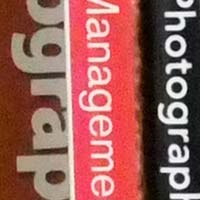 | |
| ISO 12800 (100% Ingather) | |
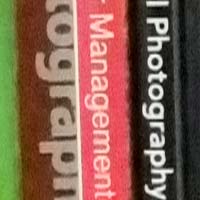 |
Sharpening
Here are two 100% crops which have been Saved equally Web - Quality 50 in Photoshop. The correct-hand image has had some sharpening applied in Photoshop. The out-of-the camera JPEG images are a piddling soft and ideally benefit from some further sharpening in a plan similar Adobe Photoshop. You tin can also modify the in-camera sharpening level.
| Original (100% Ingather) | Sharpened (100% Crop) |
 |  |
 |  |
Focal Range
The Fujifilm Finepix X10's 4x zoom lens provides a focal length of 28-112mm in 35mm terms, every bit demonstrated below.
| 28mm | 112mm |
 |  |
File Quality
The Fujifilm Finepix X10 has 2 dissimilar prototype quality settings available, with Fine being the highest quality option. Hither are some 100% crops which prove the quality of the various options, with the file size shown in brackets.
Chromatic Aberrations
The Fujifilm FinePix X10 handled chromatic aberrations very well during the review, with llittle evidence of majestic fringing that was only present effectually the edges of objects in loftier-contrast situations, as shown in the examples below.
| Instance one (100% Crop) | Example two (100% Crop) |
 |  |
Macro
The Fujifilm FinePix X10 offers a Super Macro setting that allows you lot to focus on a subject that is 1cm away from the camera. The starting time prototype shows how close you tin can get to the subject area (in this case a meaty wink carte du jour). The second prototype is a 100% crop.
| Macro Shot | 100% Crop |
 |  |
Flash
The flash settings on the Fujifilm FinePix X10 are Machine, Forced Flash, Suppressed Flash, Slow Synchro, Scarlet-eye Reduction Auto, Cherry-red-center Reduction & Forced Wink and Red-eye Reduction & Slow Synchro. These shots of a white coloured wall were taken at a altitude of one.5m.
| Suppressed Flash - Broad Angle (28mm) | Forced Flash - Wide Bending (28mm) |
 |  |
| Suppressed Flash - Broad Angle (112mm) | Forced Flash - Wide Angle (112mm) |
 |  |
And here are some portrait shots. As you can run across, neither the Forced Wink setting or the Scarlet-heart Reduction & Forced Flash selection caused whatsoever ruddy-center.
| Forced Flash | Forced Wink (100% Crop) |
 |  |
| Crimson-eye Reduction & Forced Flash | Cherry-heart Reduction & Forced Flash (100% Crop) |
 |  |
Dark Shot
The Fujifilm FinePix X10's maximum shutter speed is 30 seconds in the Transmission, Shutter-priority and Aperture-priority modes, which is excellent news if you're seriously interested in nighttime photography. The shot below was taken using a shutter speed of 15 seconds at ISO 100. I've included a 100% crop of the prototype to show what the quality is like.
| Night Shot | Dark Shot (100% Crop) |
 |  |
Image Stabilisation
Paradigm Stabilisation is Fujifilm's name for anti-shake, which in the X10 works via a sensor-shift machinery. To test this, I took 2 handheld shots of the same subject with the same settings. The first shot was taken with anti shake turned off, the second with information technology turned on. Hither are some 100% crops of the images to evidence the results. Every bit yous tin see, with anti shake turned on, the images are much sharper than with anti shake turned off.
| Shutter Speed / Focal Length | Anti Shake Off (100% Crop) | Anti Shake On (100% Crop) |
| 1/6th / 28mm |  |  |
| 1/8th sec / 112mm |  |  |
EXR Fashion
The Fujifilm FinePix X10 offers 3 EXR options. Resolution Priority (Hour) manner uses all 12 megapixels to capture the highest resolution image. Loftier ISO & Low Dissonance (SN) mode combines adjacent pixels to create larger photodiodes and amend depression-light quality in the resulting 6 megapixel epitome. D-Range Priority (DR) mode simultaneously takes ii images and so combines them to produce a 6 megapixel image with increased dynamic range. Hither is an example which was shot using each EXR mode.
| Resolution Priority (HR) | 100% Crop |
 |  |
| High ISO & Low Noise (SN) | 100% Ingather |
 |  |
| D-Range Priority (DR) | 100% Crop |
 | 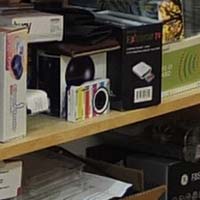 |
Dynamic Range
The Fujifilm Finepix X10 has three dynamic range settings - 100% (on by default), 200%, and 400% - and an Auto setting if yous want to allow the camera take control. These settings gradually increase the amount of particular visible in the shadow and highlight areas, with the side-effect of more dissonance appearing in the image. Note that yous can't actually turn this featureast off.
Pro Focus
The Fujifilm FinePix X10's Pro Focus scene way creates images with a shallow depth of field, with the camera taking a rapid series of exposures at different focal points and adjustment them to produce a single frame showing a sharply focused subject against a soft, out-of-focus background.
| 100% | 200% |
 | 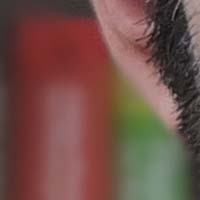 |
Pro Low-Light
The Fujifilm FinePix X10's Pro Depression-Lite scene mode produces ameliorate image clarity at high ISO levels, with the camera taking a series of 4 high sensitivity/depression-noise shots in quick succession which are then combined together using in-photographic camera processing into an image with less noise than the single exposures.
| Pro Low-Light | Pro Low-Low-cal (100% Ingather) |
 | 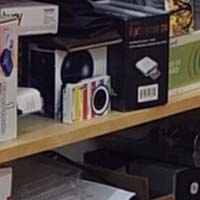 |
Film Simulation
The Fujifilm Finepix X10 offers viii unlike film simulation modes to aid replicate the wait of your favourite picture show stock from the past.
| Provia / Standard | Velvia / Vivid |
 |  |
| Astia / Soft | Monochrome |
 |  |
| Monochrome + Xanthous Filter | Monochrome + Red Filter |
 |  |
| Monochrome + Green Filter | Sepia |
 |  |
Motion Panoramas
Just like Sony's Cybershot range, the Fujifilm Finepix X10 can create movement panoramas up to 360 degrees in length. Exposure is attack the starting time frame, which acquired real issues for our indoor shot where dissimilar light sources caused large areas of vertical banding. The X10 performed much ameliorate outdoors, although sentry out for moving subjects in the frame as the X10 won't compensate for this.
Sample Images
This is a selection of sample images from the Fujifilm FinePix X10 camera, which were all taken using the 12 megapixel Fine JPEG setting. The thumbnails beneath link to the total-sized versions, which accept not been altered in any way.
Sample RAW Images
The Fujifilm Finepix X10 enables users to capture RAW and JPEG format files. Nosotros've provided some Fujifilm RAW (RAF) samples for you to download (thumbnail images shown below are non 100% representative).
Sample Movie & Video
This is a sample movie at the quality setting of 1920x1080 at 30 frames per second. Delight note that this 20 2nd moving picture is 34.6Mb in size.
Product Images
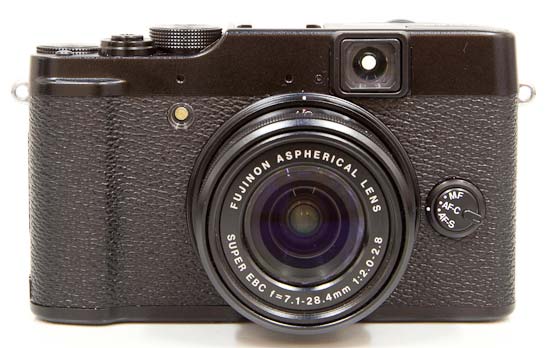 |
| Front of the Camera |
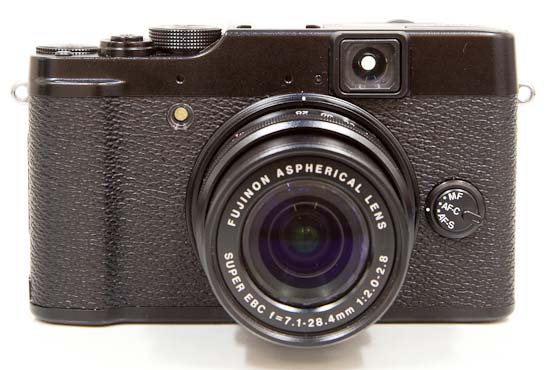 |
| Front end of the Camera / Turned On |
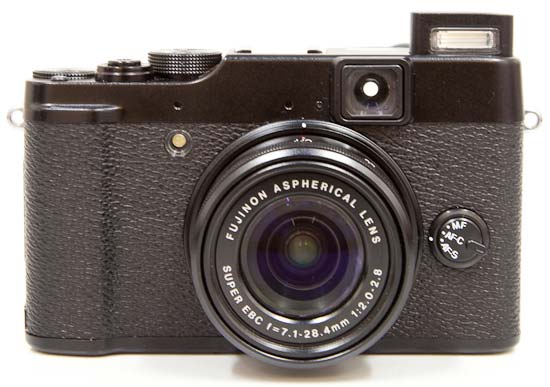 |
| Front of the Camera / Flash Raised |
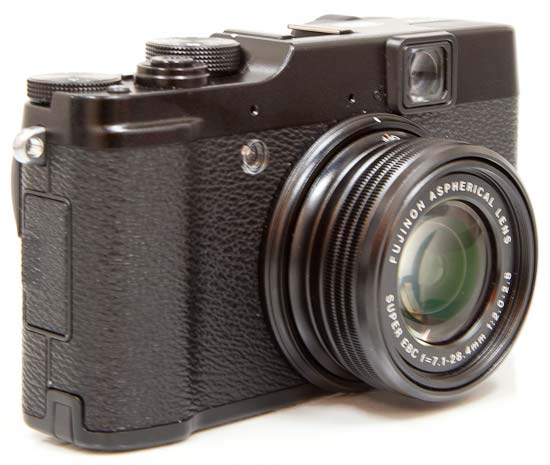 |
| Isometric View |
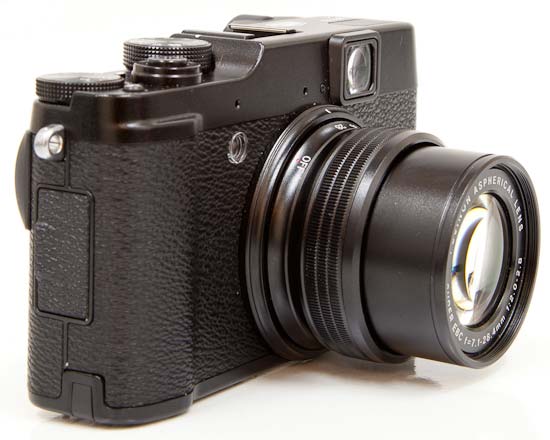 |
| Isometric View |
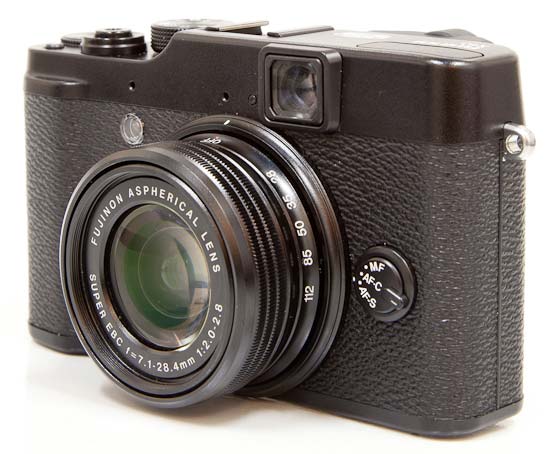 |
| Isometric View |
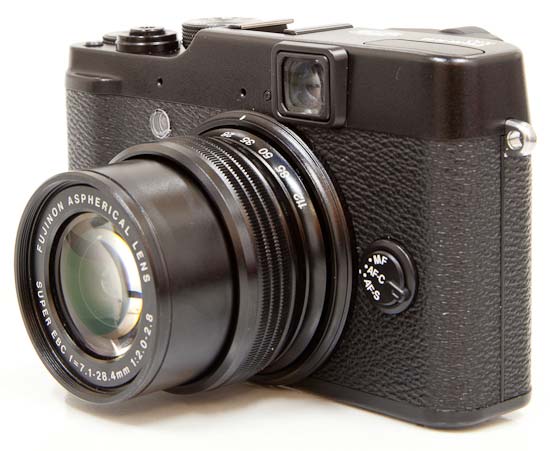 |
| Isometric View |
 |
| Rear of the Photographic camera |
 |
| Rear of the Camera / Image Displayed |
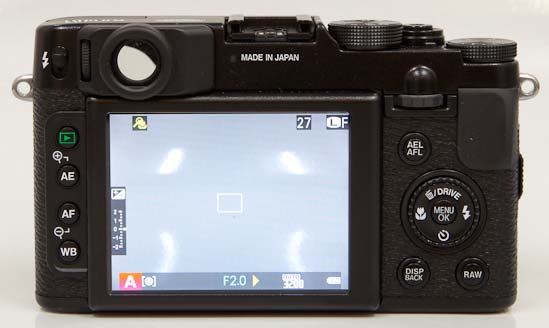 |
| Rear of the Photographic camera / Turned On |
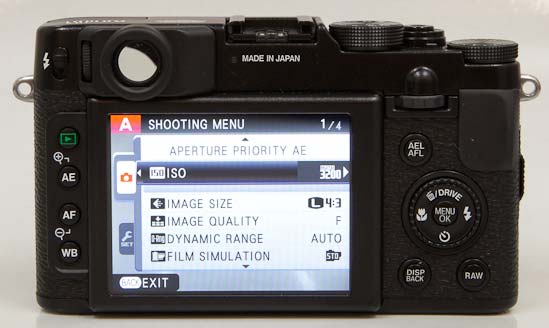 |
| Rear of the Photographic camera / Main Menu |
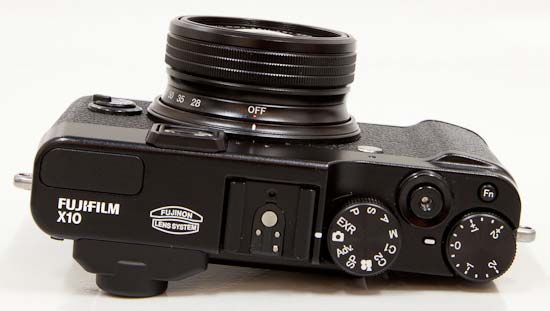 |
| Tiptop of the Camera |
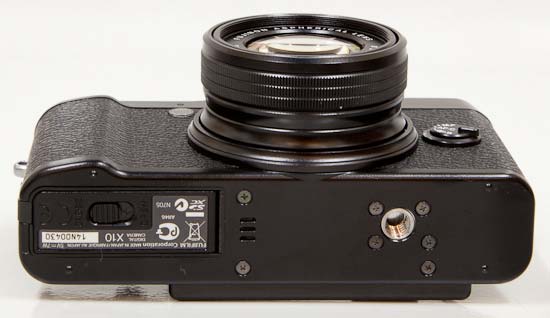 |
| Bottom of the Photographic camera |
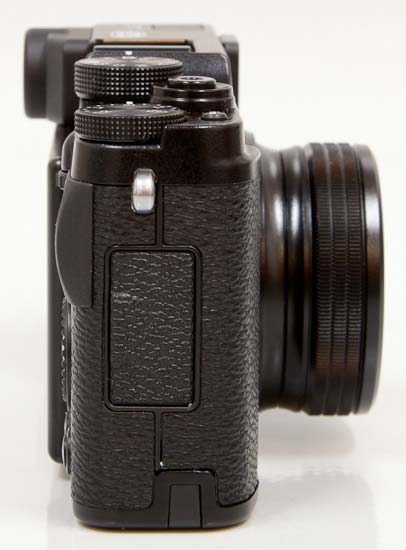 |
| Side of the Camera |
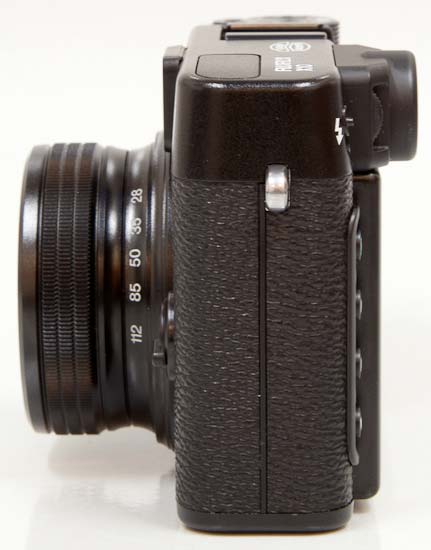 |
| Side of the Camera |
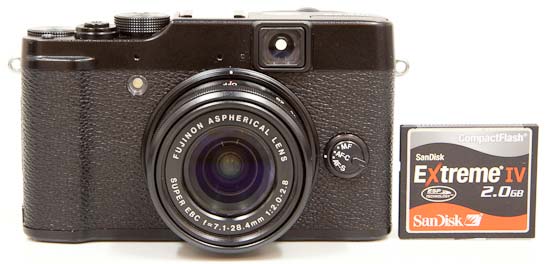 |
| Forepart of the Camera |
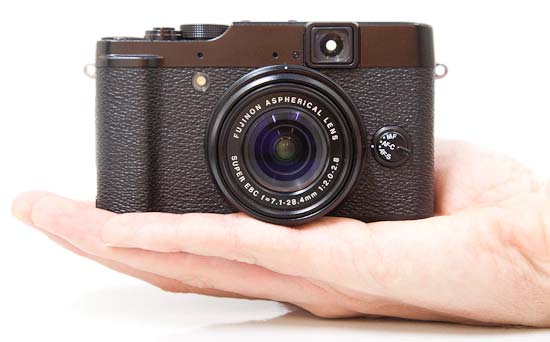 |
| Forepart of the Camera |
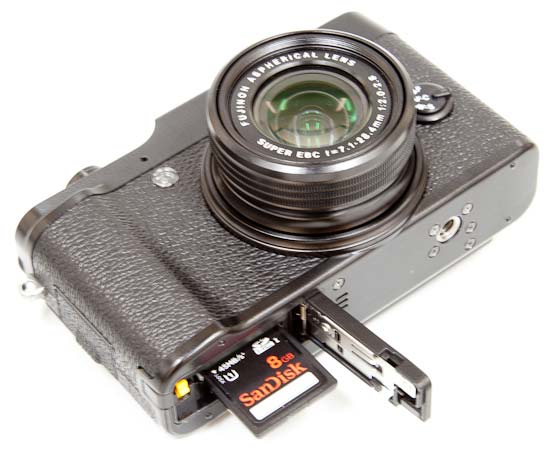 |
| Retention Card Slot |
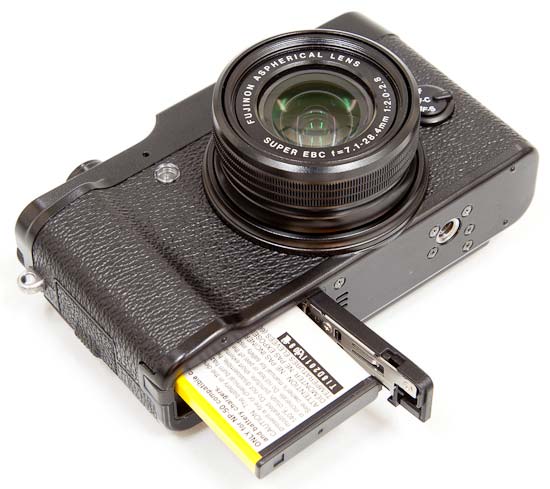 |
| Battery Compartment |
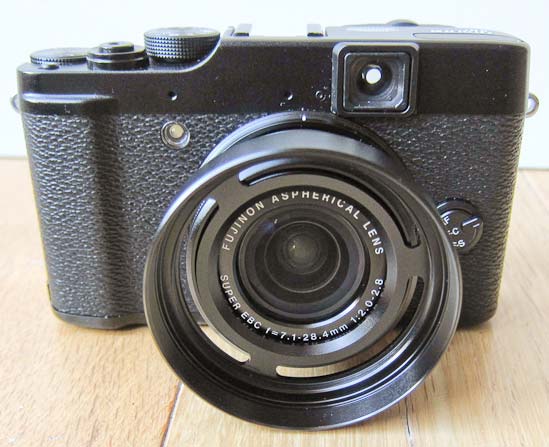 |
| Lens Hood |
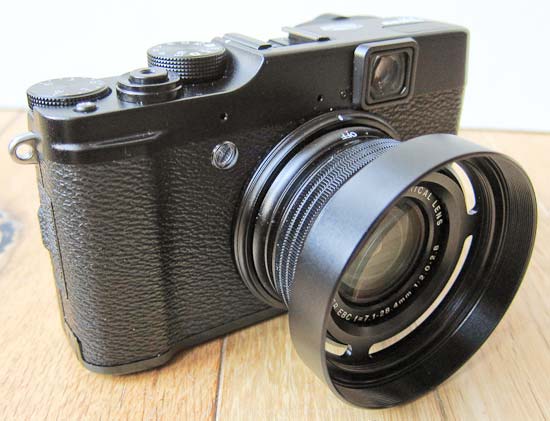 |
| Lens Hood |
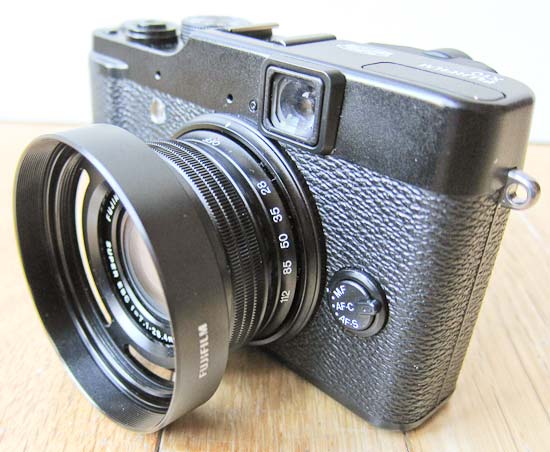 |
| Lens Hood |
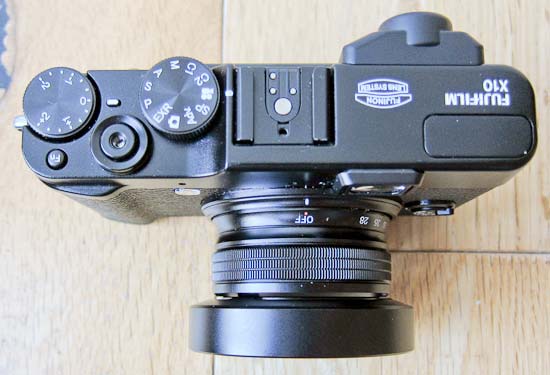 |
| Lens Hood |
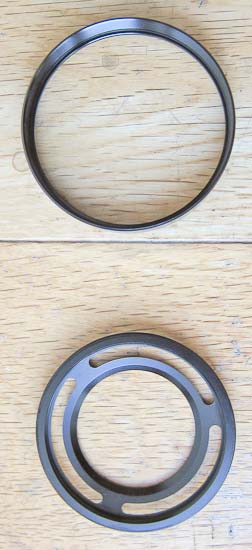 |
| Lens Hood |
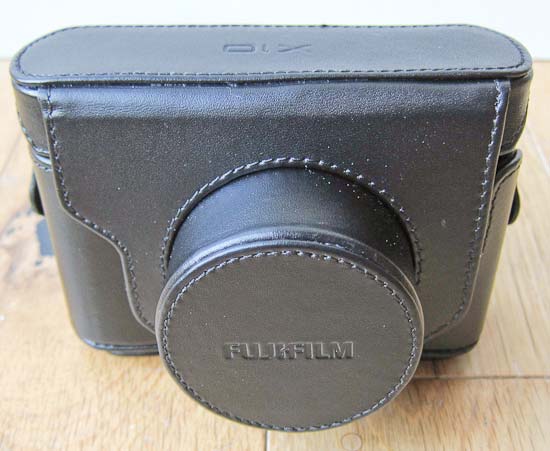 |
| Example |
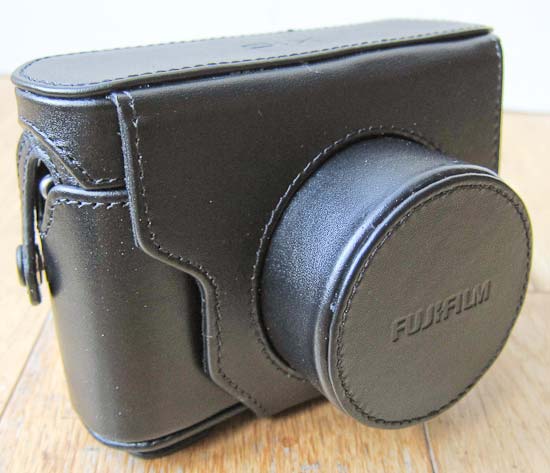 |
| Case |
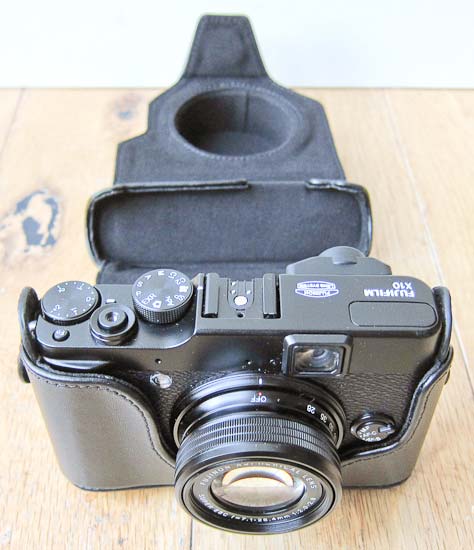 |
| Case |
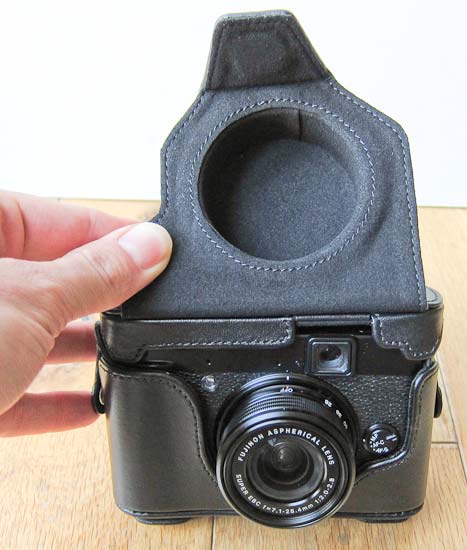 |
| Case |
Determination
The Fujifilm Finepix X10 follows in the footsteps of its bigger brother, the X100, by bringing a similar retro feel, quality build quality and lensman-friendly design to a wider audition. Information technology may only exist a humble compact photographic camera at heart, but boy, what a well-realised compact camera it is, making the X10 a production that yous'll beloved rather than simply employ. Sure, the price is sky-high for a such a small-sensor camera that isn't actually that small in size, but the image quality from the ii/3-inch CMOS sensor is markedly better than virtually all other compacts.
Equally with the X100, the new X10 delivers intuitive handling in spades, from the welcome inclusion of a true optical viewfinder to the manual zooming ring, not forgetting the exposure compensation and shooting manner dials, wink hotshoe, clever popular-upward flash and even the traditional threaded cable release. The X10 is a compact camera flamboyantly dressed upward in a pro-photographic camera's vesture, with a snappy auto-focusing system and all-circular responsiveness helping to reinforce the feeling that that is a premium product that cuts no corners.
The X10 also delivers the goods in terms of image quality. Noise is noticeable only past its almost consummate absence from ISO 100-800, with the faster full-resolution settings of 1600 and 3200 besides being very usable. The 4x lens is commendably abrupt and baloney free at both ends of its focal range, while the f/two / f/ii.8 maximum apertures makes information technology easier than most compacts to creatively throw the background out of focus.
Every bit with the X100, the but real fly in the ointment is the heart-watering price-tag. £529 / $599 is straying well into compact system camera and entry-level DSLR territory, so you really demand to ask yourself if the X10 suits your particular needs, or if a DSLR or compact system camera with their interchangeable lenses would be a better idea. If money's no object and you want the best compact camera on the market, though, then we can highly recommend the splendid new Fujifilm Finepix X10.
| Ratings (out of v) | |
|---|---|
| Pattern | 5 |
| Features | 4.five |
| Ease-of-utilise | 5 |
| Image quality | 4.v |
| Value for money | 4 |
Review Roundup
Reviews of the Fujifilm FinePix X10 from around the web.
The Fujifilm FinePix X10 is the latest serious compact camera from Fujifilm and is a more affordable version of the Fujifilm FinePix X100, but with a zoom lens and 2/3inch sensor, this ways the sensor is smaller than the X100, but larger than the other serious meaty cameras available. This means information technology is in competition with other serious compacts such equally the Nikon Coolpix P7100, Olympus XZ-1, Canon Powershot G12, Panasonic Lumix LX5 and others.
Read the full review »
While the X100 has a larger APS-C sized sensor, best in class high ISO functioning, a nice f/2 35mm equivalent prime lens, and a hybrid EVF/OVF that is superb, the X10 has a small sensor, not and so great optical viewfinder, and a semi fast f/2-2.8 zoom lens congenital into the photographic camera that is actually quite good. It is more of an avant-garde point and shoot but the design and controls scream PHOTOGRAPHERS Photographic camera!
Read the full review »
The Fuji Finepix X10 is an advanced meaty digital camera with a mechanically linked 4X wide-angle optical zoom lens. Its features include total transmission-controls with manual-focus and custom white-balance. The X10 is designed for avant-garde users with dual control-dials and a adept number of direct controls.
Read the full review »
Specifications
| Model | FinePix X10 |
|---|---|
| Resolution | 12.0 million pixels*one |
| Sensor blazon | 2/3-inch EXR CMOS with primary color filter |
| Storage media |
|
| File format | still epitome JPEG (Exif Ver 2.3)*3, RAW (RAF format), RAW + JPEG (Pattern dominion for Camera File system compliant / DPOF-uniform) movie H.264 (MOV) with Stereo sound |
| Number of recorded pixels | Fifty : (4:iii) 4000 10 3000 / (3:2) 4000 x 2664 / (16:ix) 4000 ten 2248 / (1:ane) 2992 x 2992 M : (four:3) 2816 x 2112 / (iii:2) 2816 x 1864 / (16:9) 2816 ten 1584 / (i:1) 2112 x 2112 Due south : (4:3) 2048 x 1536 / (3:2) 2048 x 1360 / (16:nine) 1920 x 1080 / (one:i) 1536 x 1536 <Motion Panorama> |
| Lens | proper name Fujinon 4 x optical zoom lens focal length f=7.1 - 28.iv mm, equivalent to 28 - 112 mm on a 35 mm camera full-aperture F2.0 (Wide) - F2.8 (Telephoto) constitution ix groups xi lenses (3 aspherical glass molded lenses included) |
| Aperture | F2.0-F11(Wide) F2.8-F11(Telephoto) 1/3EV footstep (controlled 7-blade aperture diaphragm) |
| Focus altitude (from lens surface) | Normal Broad : Approx. l cm / i.6 ft. to infinity Telephoto : Approx. 80 cm / 2.six ft. to infinity Macro Wide : Approx. 10 cm - 3.0 m / 0.3 ft. - 9.8 ft. Telephoto : Approx. fifty cm - 3.0 m / 1.6 ft. - 9.8 ft. Super Macro Approx. 1.0 cm - 1.0 g / 0.iv in. - iii.3 ft |
| Sensitivity | Automobile / Equivalent to ISO 100 / 200 / 250 / 320 / 400 / 500 / 640 / 800 / 1000 / 1250 / 1600 / 2000 / 2500 / 3200 / 4000* / 5000* / 6400* / 12800* (Standard Output Sensitivity) * ISO4000 / 5000 / 6400 : Chiliad mode or lower, ISO12800 : South mode |
| Exposure control | TTL 256-zones metering, Multi / Spot / Average |
| Exposure mode | Programmed AE, Discontinuity Priority AE, Shutter Priority AE, Manual |
| Shooting modes | SP Natural Light, Natural Light & Flash, Portrait, Portrait Enhancer, Landscape, Sport, Night, Dark (Tripod), Fireworks, Sunset, Snow, Beach, Political party, Flower, Text, Underwater Mode Dial EXR, Auto, P, S, A, M, C1, C2, Picture, SP, Adv. |
| Image stabilisation | Lens shift type |
| Face detection | Yep |
| Exposure compensation | -2.0EV - +2.0EV one/3EV footstep |
| Focus | mode Single AF / Continuous AF/MF Distance Indicator type AF frame selection |
| Shutter speed | (Auto mode) i/4 sec. to one/4000* sec., (All other modes) 30 sec. to 1/4000* sec. * one/4000 sec. at small discontinuity, 1/yard sec. at full aperture |
| Continuous shooting | Superlative Super Loftier : approx. x fps (Size Yard, South) Loftier : approx. seven fps (Size L, M, Southward) Middle : approx. 5 fps (Size Fifty, M, S) Depression : approx. three fps (Size L, 1000, S) *SD memory card with a form 4 write speed (4 MB/sec.) or better is recommended. *Maximum frame number for each continuous shooting way is limited. others Best Frame capture : Super High : approx. 10 fps viii / 16 frames (Size Yard, S) High : approx. 7 fps viii frames (Size L, M, Due south) / 16 frames (Size Grand, S) Middle : approx. five fps 8 frames (Size L, M, S) / sixteen frames (Size M, Southward) Low : approx. iii fps viii frames (Size L, Thou, S) / xvi frames (Size M, S) |
| Auto bracketing | AE Bracketing : ±i/3EV, ±two/3EV, ±1EV Motion-picture show Simulation Bracketing : PROVIA / STANDARD, Velvia / VIVID, ASTIA / SOFT Dynamic Range Bracketing : 100%, 200%, 400% ISO Sensitivity Bracketing : ±ane/3EV, ±ii/3EV, ±1EV |
| Focus | mode Unmarried AF / Continuous AF (EXR AUTO, Moving-picture show), Manual AF (1-push AF style included) type TTL contrast AF, AF aid illuminator available AF frame selection Multi, Area, Tracking |
| White residuum | Automatic scene recognition Preset : Fine, Shade, Fluorescent low-cal (Daylight), Fluorescent light (Warm White), Fluorescent low-cal (Cool White), Incandescent light, Underwater, Custom, Color temperature pick |
| Cocky timer | 10 sec. / two sec. filibuster |
| Flash | Auto wink (super intelligent wink) Effective range : (ISO Machine (800)) Wide : Approx. l cm - 7.0 thou / i.half-dozen ft. - 22.9 ft. Telephoto : Approx. 80 cm - v.0 grand / 2.vi ft. - 16.4 ft. |
| Wink modes | Red-eye removal OFF : Auto, Forced Flash, Suppressed Flash, Slow Synchro. Cherry-red-eye removal ON : Ruddy-eye Reduction Automobile, Ruddy-middle Reduction & Forced Flash, Suppressed Wink, Red-eye Reduction & Slow Synchro. |
| Hot shoe | Yes |
| Viewfinder | Optical zoom viewfinder Approx. 85% coverage Diopter adjustment : -3.5 - +1.v one thousand-1(dpt) |
| LCD monitor | two.viii-inch, approx. 460,000 dots, TFT color LCD monitor, approx. 100% coverage |
| Movie recording | 1920 x 1080 pixels / 1280 x 720 pixels / 640 10 480 pixels (30 frames / sec.) with stereo sound Optical zoom (manual) tin can be used. |
| Photography functions | EXR way (EXR Auto / Resolution priority / Loftier ISO & Depression noise priority / Dynamic range priority), Face recognition, Face up Detection, Automobile ruby-red-eye removal, Film simulation, Framing guideline, Frame No. memory, Histogram brandish, Best frame capture, Advanced mode (Motion panorama360, Pro focus, Pro low light), Loftier Speed Movie (70 / 120 / 200 frames/sec.), Electronic level, One-bear upon RAW, Advanced Anti Blur |
| Playback functions | Face up Detection, Machine red-eye removal, Multi-frame playback (with micro thumbnail), Protect, Crop, Resize, Slide evidence, Image rotate, Voice memo, Histogram display, Exposure warning, Photobook help, Image search, Favorites, Mark for upload, Panorama, Erase selected frames, RAW conversing |
| Other functions | PictBridge, Exif Print, 35 Languages, Time departure, Silent mode |
| Last | Video output NTSC / PAL selectable with Monaural sound Digital interface USB 2.0 High-Speed HDMI output HDMI Mini connector |
| Ability supply | NP-50 Li-ion battery (included) CP-fifty with Air conditioning ability adapter Ac-5VX (sold separately) |
| Dimensions | 117.0(W) 10 69.6(H) 10 56.8(D) mm / 4.half dozen(W) x two.7(H) 10 ii.two(D) in. |
| Weight | Approx. 350 g / 12.iii oz. (including battery and retentivity carte) Approx. 330 g / 11.half-dozen oz. (excluding battery and memory card) |
| Operating temperature | 0°C - twoscore°C |
| Operating humidity | x% - 80% (no condensation) |
| Accessories included | Li-ion bombardment NP-50 Bombardment charger BC-45W Shoulder strap Lens cap USB cable CD-ROM Owner's manual |
| Digital zoom | Intelligent digital zoom (approx. 2X) |
Your Comments
- Introduction
- Ease of Use
- Image Quality
- Sample Images
- Production Images
- Conclusion
- Review Roundup
- Specifications
Source: https://www.photographyblog.com/reviews/fujifilm_finepix_x10_review
Posted by: lermalaithy.blogspot.com

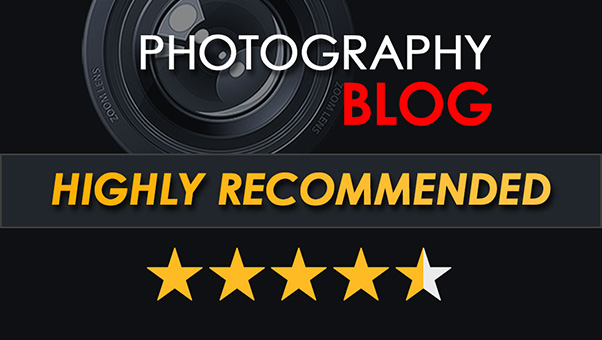
0 Response to "How To View Images From A X10 Camera Using Va12a Without X10 Software"
Post a Comment